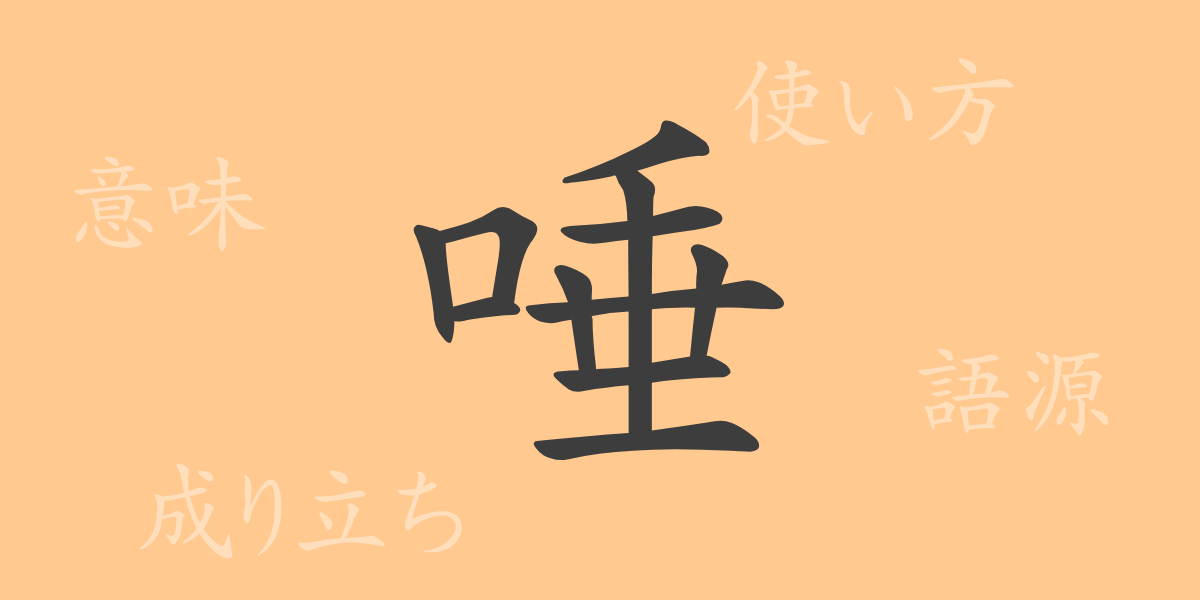Japanese language reflects its richness through Kanji characters, each imbued with profound meanings and usage as idiomatic expressions that vividly reflect Japanese culture. This article delves deeply into “唾” (だ) (da), a commonly used Kanji character not often seen in daily life, exploring its origin, meaning, and usage.
Origin of “唾” (da)
The Kanji “唾” consists of the radical “口” (kuchi), representing the mouth, and “垂” (tareru), which indicates something hanging or dripping. Originally from ancient China, it depicts liquid dripping from the mouth, symbolizing saliva. This character has been closely linked with human life and cultural practices since ancient times.
Meaning and Usage of “唾” (da)
“唾” primarily means saliva but also carries connotations of spitting in disdain or contempt. Metaphorically, it is used to denote something worthless. Common phrases include “唾を吐く” (spit) and “唾を飲む” (swallow one’s saliva, often meaning to hold back saying something).
Readings, Stroke Count, and Radical of “唾” (da)
“唾” is an integral Kanji in everyday Japanese, with various applications across contexts.
- Readings: On’yomi ‘ダ’ (da), Kun’yomi ‘つば’ (tsuba)
- Stroke Count: 11 strokes
- Radical: 口部 (kuchihen) – the radical for mouth
Idioms and Proverbs Using “唾” (da) and Their Meanings
Idioms involving “唾” often carry direct and metaphorical meanings. For example, “唾をつける” (putting saliva on something) can mean warding off bad luck. “唾を飲む” indicates restraining oneself from speaking. “唾棄すべき” (despicable) is used to express contempt for something or someone.
Conclusion on “唾” (da)
The Kanji “唾” illustrates not only a physiological phenomenon but also encompasses a broad spectrum of expressive power in the Japanese language. It is used both in literal and figurative contexts to express emotions and attitudes, deepening our understanding of the language’s cultural and philosophical depths.

























